Yeah, I know. I know. Sometimes you just want me to shut up and let you have nice things.
I was offered some ‘Swiss green Opal’ by a seller I’ve dealt with a few times based out of Jaipur, India. I was already buying a few items so figured I’d take a look – but I forgot to do what I normally do, which is ‘have a clue what I’m buying’.
This is a genuinely attractive material, it has an excellent contrast between the dark and light stripes, as well as a minor chatoyance across the light stripes. It reminded me a little of good quality Russian Amazonite, albeit with a darker green colour.
Anyway. It arrived, and I was quite pleased with the appearance, but it didn’t strike me as an Opal of any kind, so I had a quick google… turns out this stuff is apparently Chrysotile in Serpentine. Yes, that Chrysotile.
Without further information or study, its difficult to tell if this stuff is from Canada or Brazil, both of which have very similar looking Chrysotile deposits. Shouldn’t matter too much, to be honest.
It isn’t Swiss, and it isn’t Opal. It IS Asbestos.
I can’t (and won’t!) tell you whether this is definitely and absolutely dangerous, but generally speaking I try to avoid having asbestos around unless its in sealed boxes.
As a sidenote: I do have a collection of ‘dangerous’ minerals, including numerous forms of asbestos, mercury ores, uranium ores. They are stored in sealed boxes – they are not especially dangerous when properly stored.
What makes these pieces worrying is they are cut en cabochon – intended for use in jewellery.
A cursory google search reveals UK sellers selling pendants and jewellery made from this material on Etsy and Ebay, as well as numerous tumbled stones, palmstones, etc.
It is possible that in its cut and polished state, it is relatively safe. I do not know enough about asbestos to be qualified to comment on that.
However, even if it did turn out to be relatively safe, have you honestly never known a customer to break a stone or a piece of jewellery?
I don’t think its worth the risk.
In addition, if this is genuinely Chrysotile it is possibly illegal to sell in the UK. Unfortunately, I do not have access to anything with enough magnification to properly examine this specimen – if any gemologist or research happens to read this and does, please feel free to email me and I’ll send a piece to you.

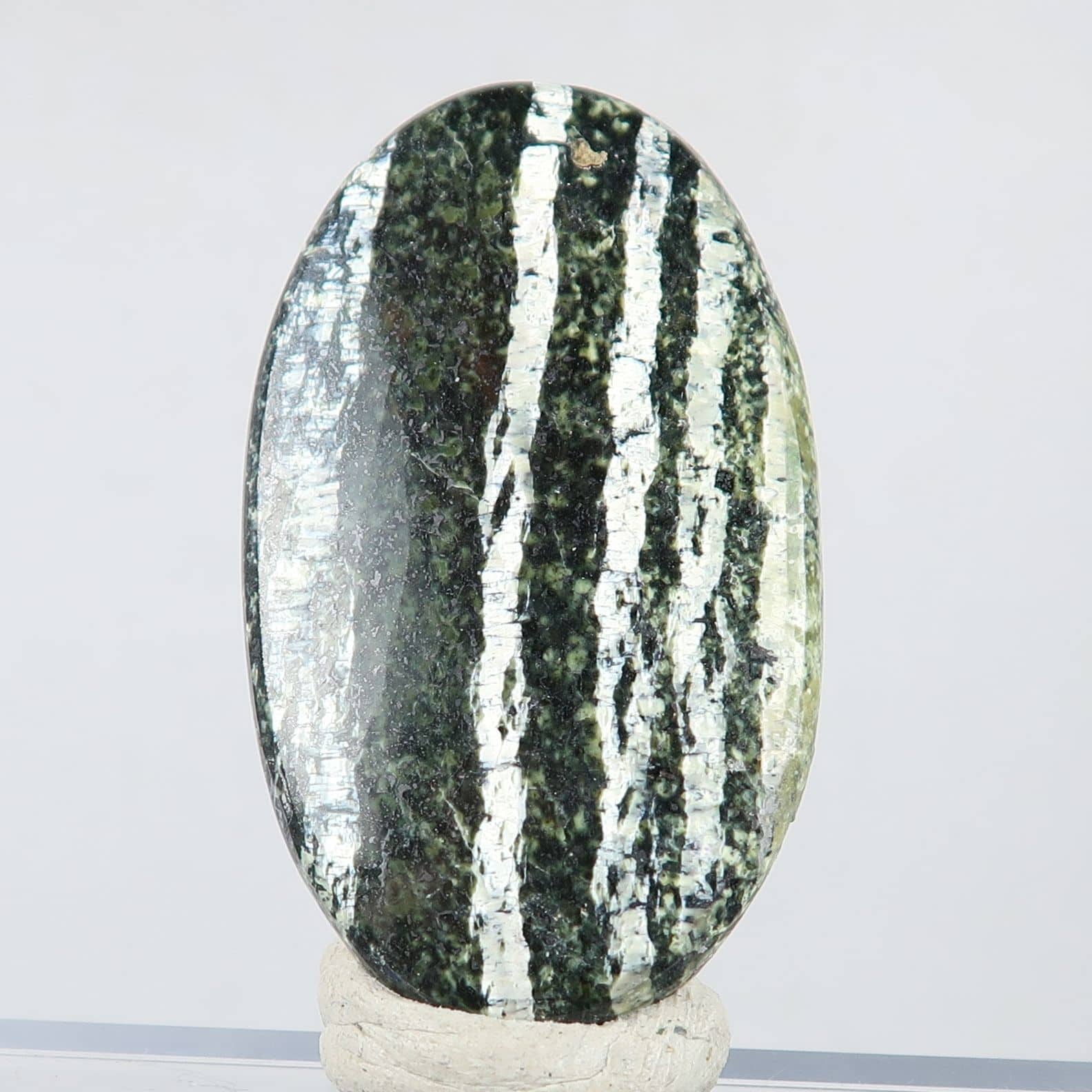
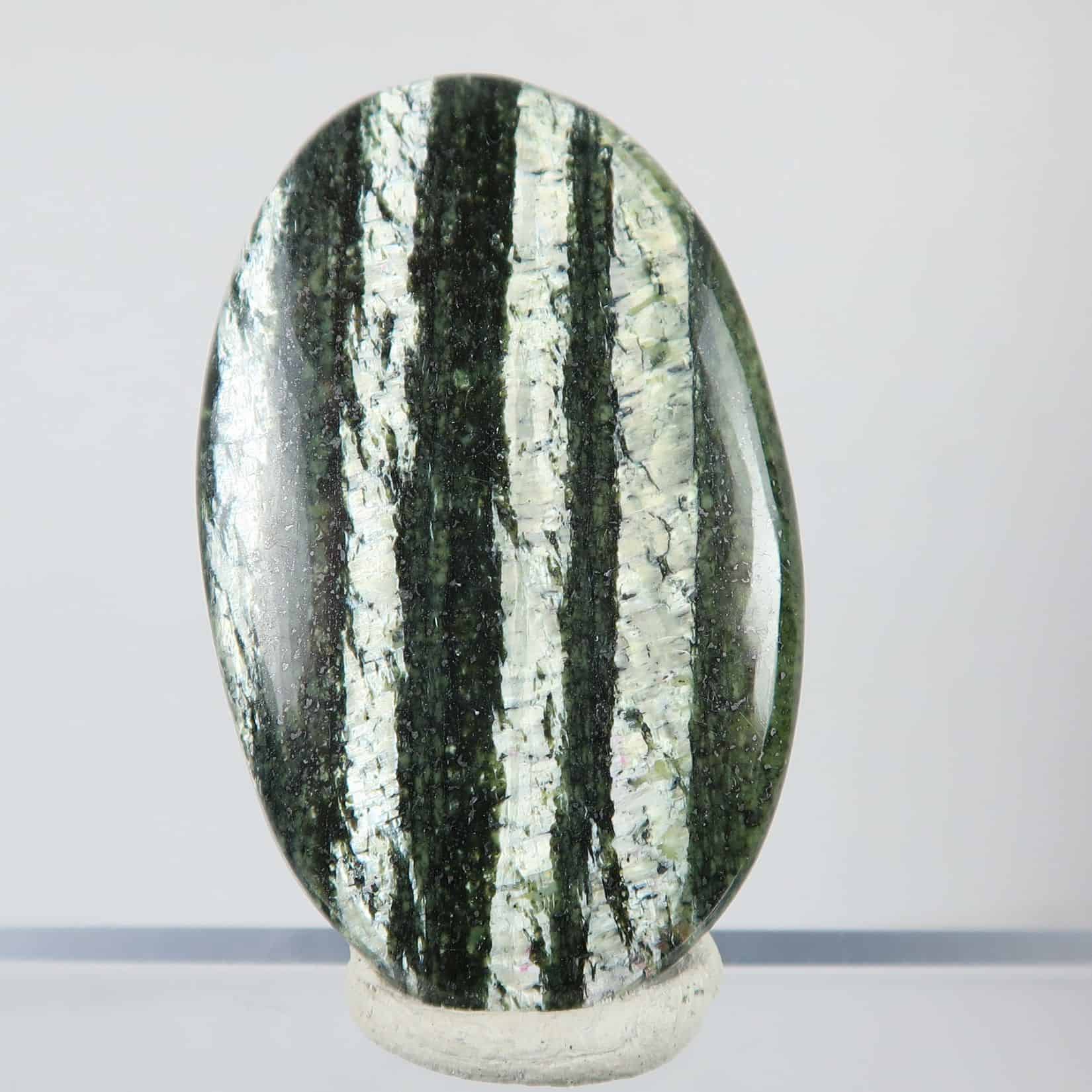
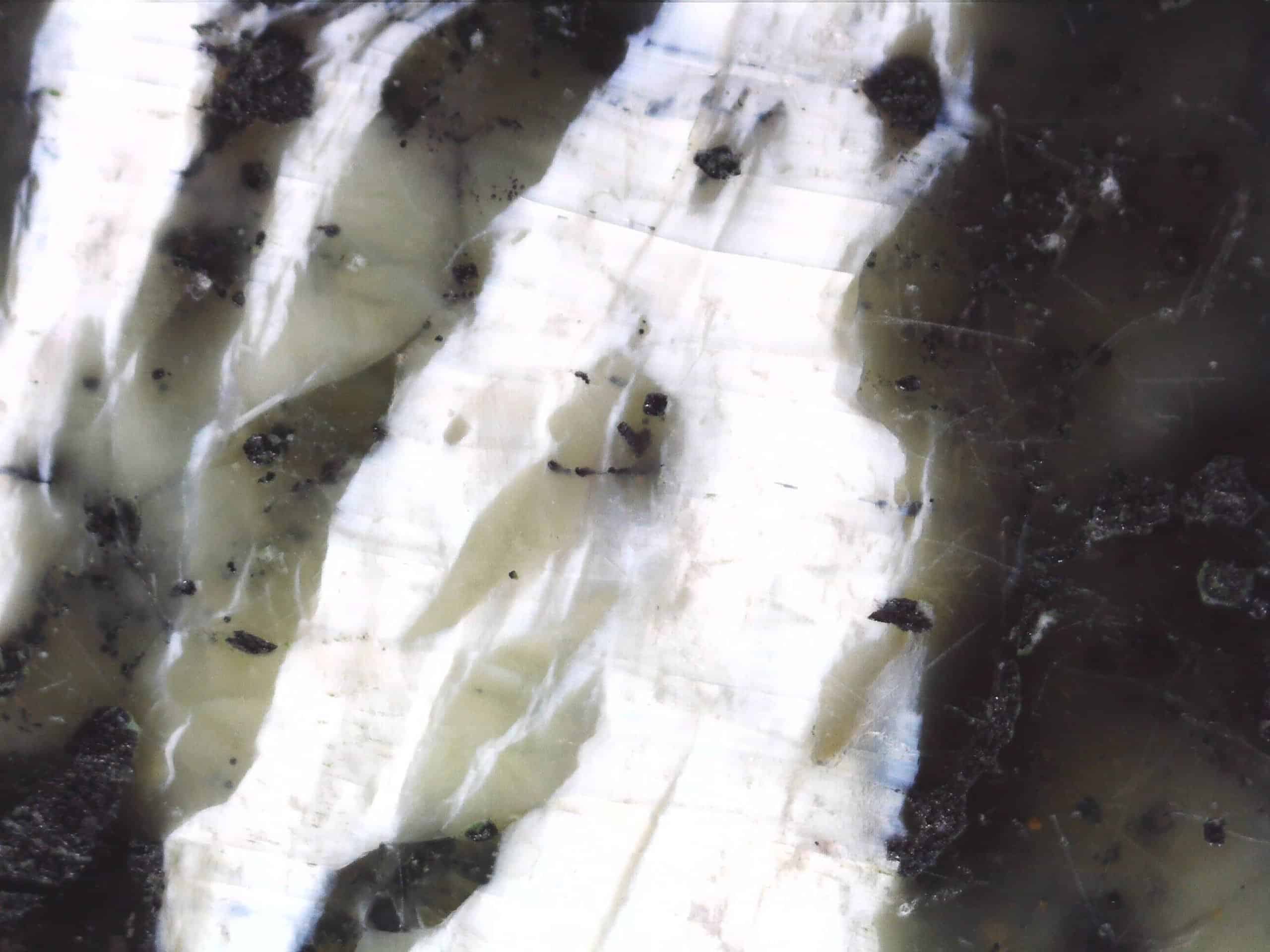
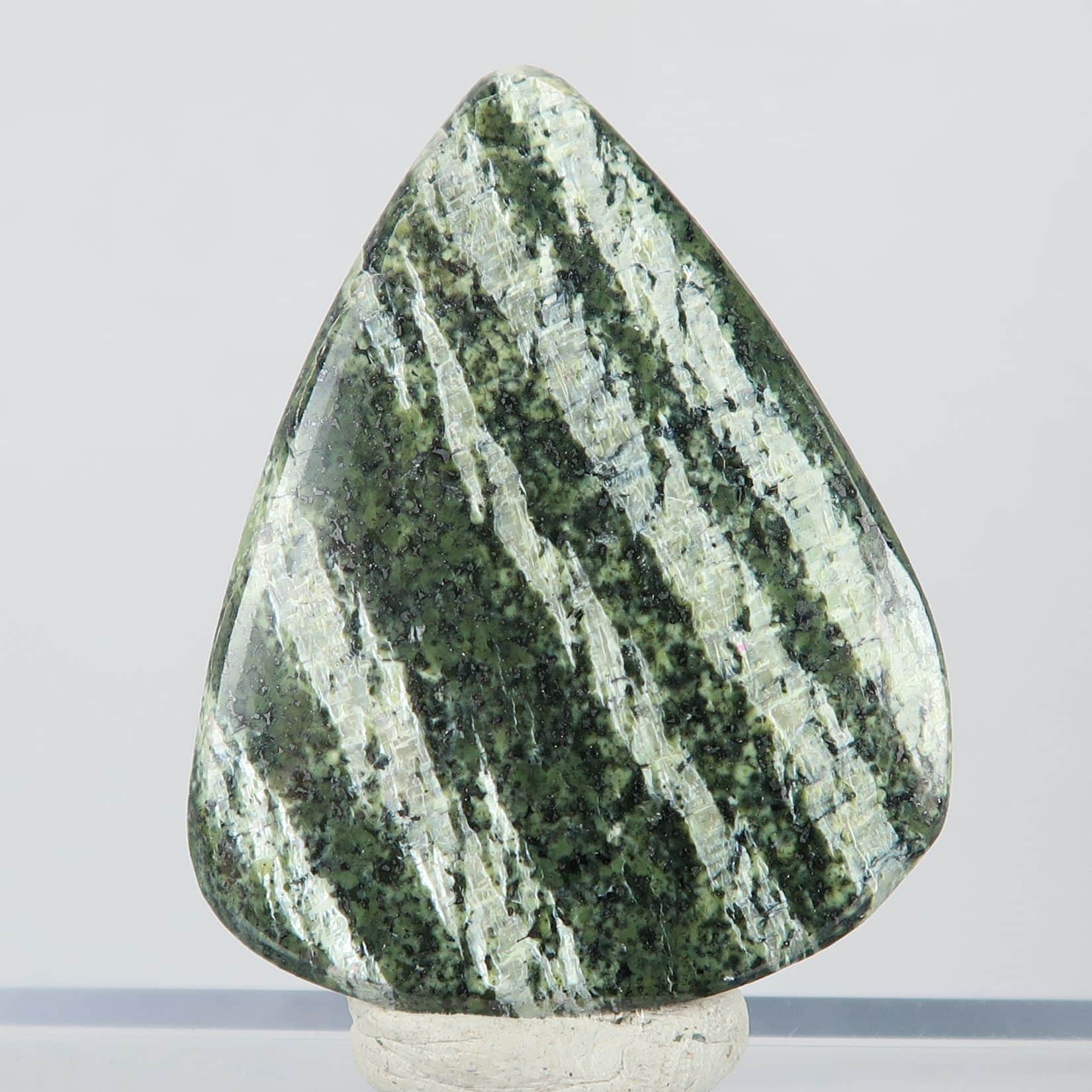
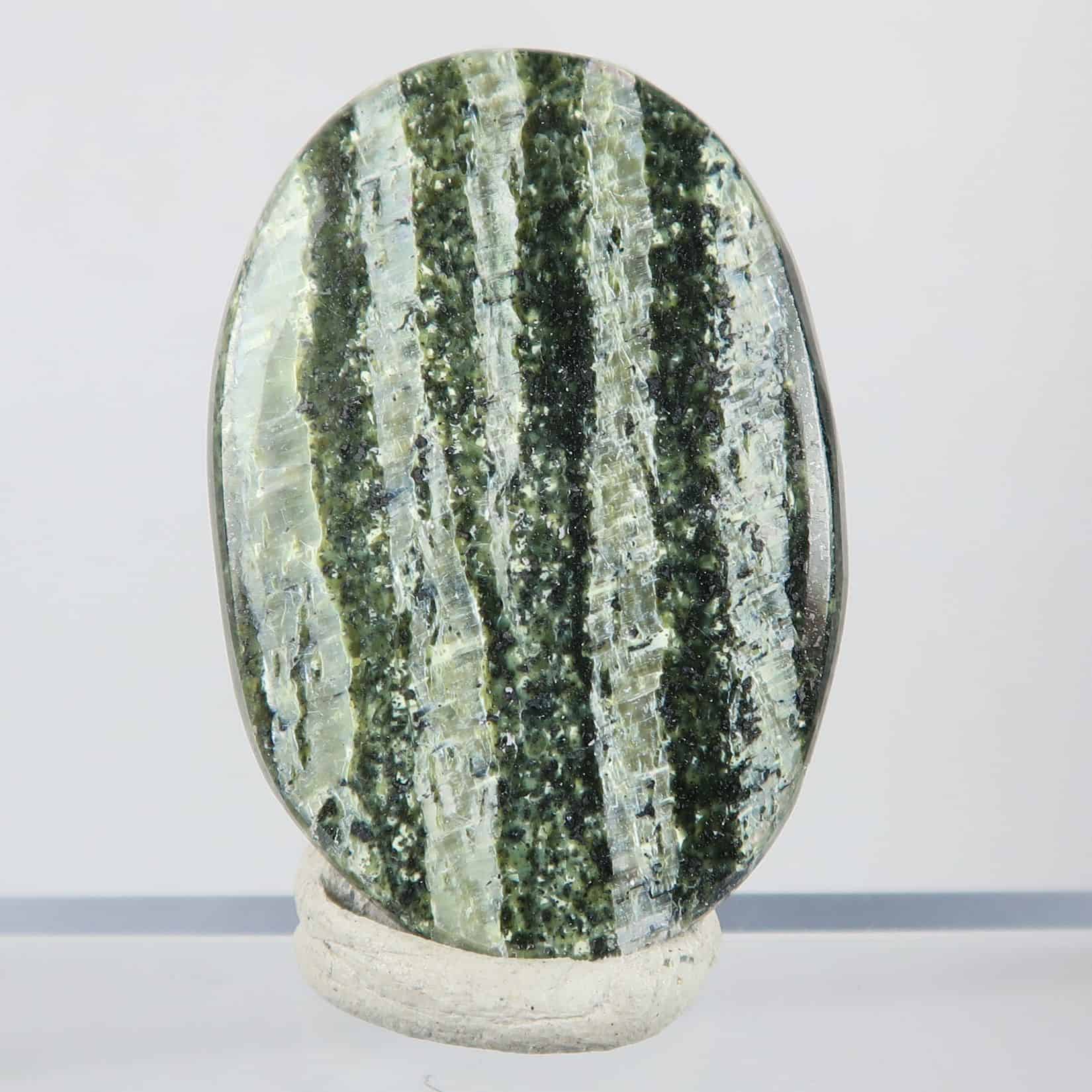
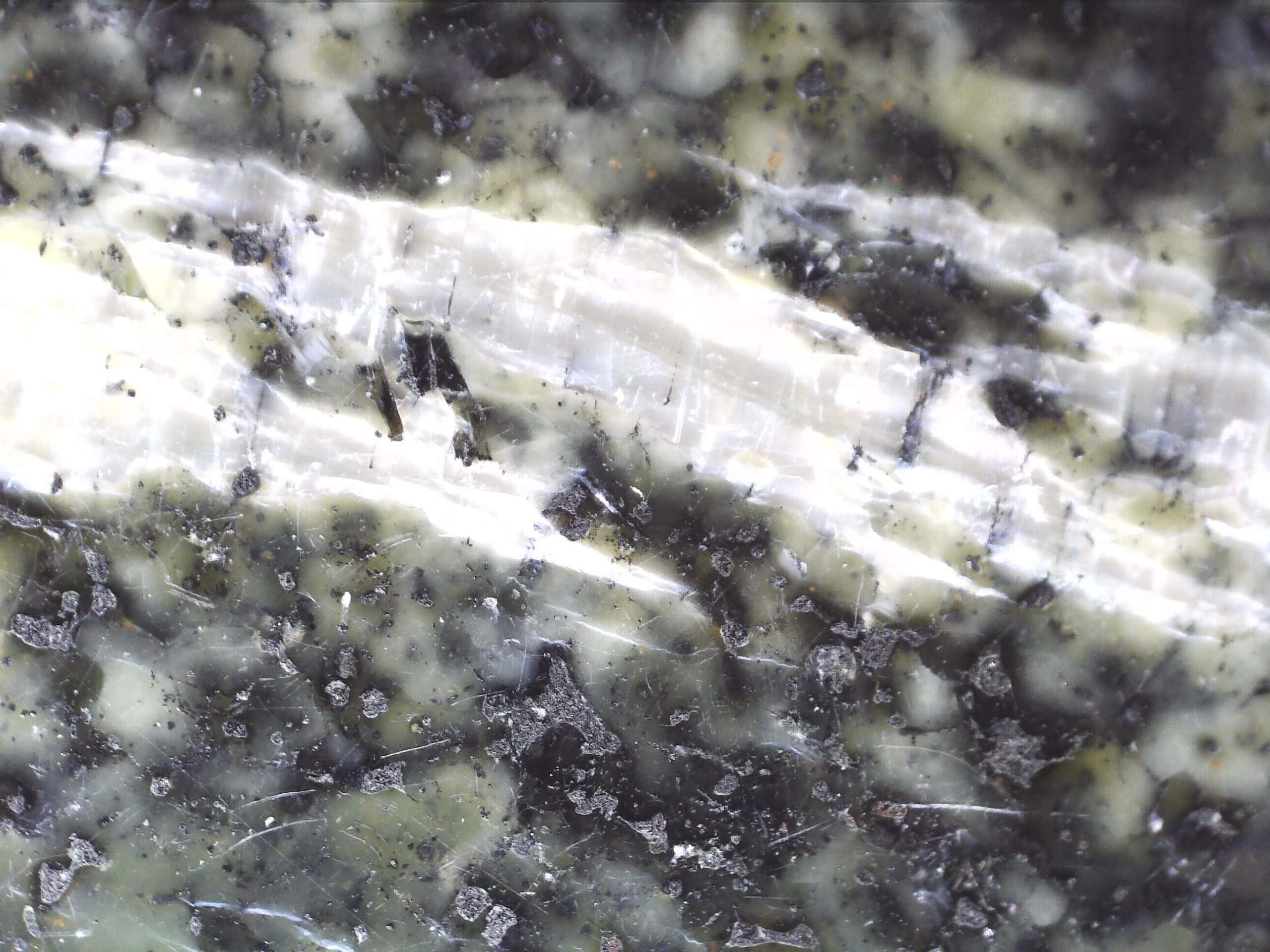
A lot of the stones I’ve gotten from india are resined. That’s any stone. They are notorious for not finishing the backs. I had purchsed so swiss opal and noticed the fibres. The backs werent cealed. I got a bad feeling when I saw the fibres. Found your site. I found this too and thought I would share. https://gem.agency/gemstones/chrysotile/
You can actually see fibres on your piece? That’s very worrying.
thank you very much
It is the release and inhalation of the fibres that is the risk from any of the different asbestos minerals, there are at least six. Print release is a simple measure, keep the material sealed or wetted for example. The hazard remains but you have minimised the significant risk associated with the dust and fibres.
Oh ! goodness gracious me ! If you have purchased a gob-smacking example of a Green Swiss Opal ~~~~ enjoy it & appreciate another of natures wonders ( I have a beautiful piece ). BUT ,don’t confuse it with a yummy biscuit & eat it !! DON’T, smash it to pieces & pulverise it to a powder
& sprinkle it on your breakfast cereal or shove it up one’s nose !
I do believe that Malachite is rather potent when grinding & cutting ~~~
but it’s a gob-smacking stone too ~~~~ wear a frig’n MASK !!
As for the stone in question ,Swiss Opal , IT’S JUST A NAME ONLY.
Alexandrite was probably named after the discoverers secret girl friend or a UK Princess !
Just by the way ~~~~ from the first motor cars ( 1895 – 1900 ) the brakes
they used all had heaps of asbestos ,right up to the late 1990’s & guess where all that asbestos powder is now ~~~. in the environment ,& we breath the air ! SO, JUST BUY A NICE EXAMPLE for your collection & enjoy your hobby ~~~~~ if you’re really worried ,splash a bit of paint or varnish on the
back-side to seal it off to prevent you from dying an excrutiating death !
OH DEAR . CHEERS. HAVE A NICE DAY.
When trade names use the names of pre-existing and valid materials to imply they are something they aren’t, they’re no longer trade names, they are scams. If I started to sell pieces of glass as “Canadian Emerald” it wouldn’t be acceptable either.
“Swiss Opal” is neither swiss or Opal, that is a scam name. Alexandrite is not pretending to be something else.
There’s nothing wrong with collecting asbestos minerals, either – with precautions. When it comes to potentially dangerous minerals (or anything else) the most realistic method is to reduce your exposure to them, whether or not there is exposure in your environment is irrelevant.